
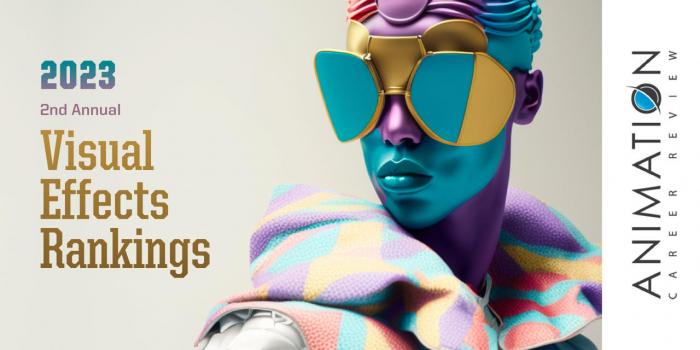
What are the top visual effects schools in the U.S. for 2023?
| Ranking | School | State |
|---|---|---|
| 1 | Gnomon School of Visual Effects | California |
| 2 | Savannah College of Art and Design | Georgia |
| 3 | University of Southern California | California |
| 4 | School of Visual Arts | New York |
| 5 | Academy of Art University | California |
| 6 | The Digital Animation & Visual Effects School | Florida |
| 7 | ArtCenter College of Design | California |
| 8 | University of Texas at Austin | Texas |
| 9 | Rochester Institute of Technology | New York |
| 10 | Texas A&M University | Texas |
| 11 | University of California, Los Angeles | California |
| 12 | Carnegie Mellon University | Pennsylvania |
| 13 | Otis College of Art and Design | California |
| 14 | Rhode Island School of Design | Rhode Island |
| 15 | University of Central Florida | Florida |
| 16 | DePaul University | Illinois |
| 17 | University of Utah | Utah |
| 18 | Florida State University | Florida |
| 19 | Drexel University | Pennsylvania |
| 20 | Georgia Institute of Technology | Georgia |
| 21 | Chapman University | California |
| 22 | New York Film Academy | New York |
| 23 | Columbia College Chicago | Illinois |
| 24 | Purdue University | Indiana |
| 25 | University of Florida | Florida |
Our 2023 rankings of the Top 25 visual effects (VFX) schools in the U.S., our second annual rankings for VFX. For an explanation of ranking criteria, click here.

The VFX Program at Gnomon prepares students for immediate employment in the entertainment industry. For students seeking careers in Visual Effects (VFX), Gnomon has a Digital Production BFA Program with a VFX Concentration. Program benefits include small class sizes of approximately 14 students; a studio-environment consisting of a 35,000 square foot lot within the historic Television Center Studio lot; and instructors who are working professionals in the VFX, Games, and Animation industries.
The Digital Production BFA with a VFX Concentration consists of 180 total units, with 135 within the field of career-focused study and 45 in general education. Within the program’s 135 career-focused units are 30 units of concentration-specific courses. Examples include Principles of VFX, Liquid Simulations, Virtual Production, VFX Design, Motion Capture, Dynamic Effects 1-4, and VFX for Games.
The Digital Production BFA at Gnomon can be completed in 12 terms over three to four years. The program culminates with the creation of a professional demo reel that showcases the students best work.
For students seeking a shorter path, Gnomon has a Digital Production Certificate consisting of eight terms completed over two years. This option has a Visual Effects Animation Emphasis Area. Course examples include Animation and Visual Effects 1-2, Dynamic Effects 1-4, and HD Digital Filmmaking for Visual Effects. Certificate students will graduate with a demo reel of their best work.
All Gnomon students receive training in industry software such as After Effects, Houdini, Nuke, V-Ray, Photoshop, ZBrush, and Maya.
With a 98% placement rate, Gnomon has 900+ industry-employed graduates to date. Alumni are VFX Artists, Gameplay Animators, Character Artists, Cinematics Animators, and Environment Artists, at some of the world’s top studios. Examples include Walt Disney Animation Studios, DreamWorks, Industrial Light & Magic (ILM), Nickelodeon, Netflix, Fox, Paramount, Framestore, and Sony Pictures Animation. Graduates are
Located in Hollywood, California, Gnomon has been dubbed the “MIT of Visual Effects” by Fast Company Magazine. Established in 1997 and serving more than 550 students, the school provides degree and vocational certificate programs, as well as 100+ individual 10-week course options. Gnomon is accredited by the Accrediting Commission of Career Schools and Colleges (ACCSC).

The Visual Effects (VFX) Program at Savannah College of Art and Design (SCAD) has produced 86 alumni who contributed to 19 Academy Award nominated films in 2020. Examples include Star Wars: The Rise of Skywalker, Frozen 2, Avengers: Endgame, Toy Story 4, and A Beautiful Day in the Neighborhood.
SCAD VFX students have the unique opportunity to work with big brands through SCADPro—the school’s in-house design studio. Outside of SCADPro, students have opportunities create visual effects and animations with premium software such as Pixar's RenderMan, Autodesk Arnold, Nuke, Maya, Resolve, Adobe Substance 3D Painter, and Houdini. Students also have access to more than 800 networked computers and a 60,000 square-foot, state-of-the-art digital media center consisting of a green screen lab, a 75-seat in-house theater, and studio environment.
The VFX Programs at SCAD are part of the School of Animation and Motion. Three degree pathways are available including a BFA, MA and MFA. The BFA and MFA Programs are available at the Atlanta and Savannah campuses. The MA Program is available at the Savannah campus only.
At all degree levels, SCAD VFX students receive instruction from award-winning professors who have worked at major studios and on award-winning productions such as The Lion King, Pocahontas, and Ice Age. Course examples for the BFA Program include Storyboarding Essentials, Digital Visual Effects, Visual Effects Studio I-II, Concept Development for Visual Effects, Visual Effects-based Cinematography, and Professional Development for Visual Effects. VFX BFA students have the option to complete an internship, 500-level SCADpro Elective, or a Business-focused Elective.
MA Students will take courses such as Programming Concepts for Visual Effects, Modeling for Visual Effects, Visual Effects Theory and Application, Visual Effects MA Studio and Visual Effects Portfolio. The Graduate Internship is optional. MFA students will take courses such as Visual Effects Studio I: Preproduction, Visual Effects Studio II: Production, Particles and Procedural Effects: Stochastic and Calculated Methodologies, Visual Effects Theory and Application, and Digital Compositing II: Advanced Studies of Multi-layered Integration. The Graduate Internship is required as well as successful completion of the Visual Effects MFA Thesis.
Graduates of the VFX Programs at Savannah College of Art and Design hold positions such as Visual Effects Artists, CGI FX CGI Technical Directors, 3D Environment Artists, Lighting Technical Directors, VFX Producers, Previsualization Artist, Digital Compositors, and Look Development Artists at major studios around the world. SCAD graduates work at Blizzard Entertainment, Disney, Pixar, DreamWorks Animation, Shade VFX, Pixomondo, and Blur Studio.
Providing more than 100 degree program options and over 75 minors and certificate programs, Savannah College of Art and Design (SCAD) has more programs and specializations than any other art and design college in the U.S. Founded in 1978, the school opened in 1979 with just 71 students, one classroom, and an administration building. Today, SCAD serves more than 15,000 students across campuses in Atlanta and Savannah, Georgia, and Lacoste, France. Savannah College of Art and Design is accredited by the Southern Association of Colleges and Schools Commission on Colleges (SACSCOC).

University of California (USC) houses the School of Cinematic Arts (SCA), home to the John C. Hench Division of Animation + Digital Arts (Hench DADA). This competitive Division is multidisciplinary, allowing students to focus their studies in areas from Visual Effects (VFX) and Character Animation to Motion Graphics and Visual Storytelling. Hench DADA students also have the unique opportunity to collaborate on projects with students in the Interactive Games Division, Thorton School of Music, the Production (Live Action) Division, and Kaufman School of Dance.
Specific program options for students interested in VFX include the Hench DADA Animation + Digital Arts BFA with a Concentration in Visual Effects and the SCA Game Art BFA with a Concentration in Visual Effects. Course examples across programs include Visual Effects, The World of Visual Effects, Digital Effects Animation, Live Action Integration with Visual Effects, 3D Modeling, Animation, and Visual Effects, Programming in Python, Digital Lighting and Rendering, Organic Modeling for Animation, and Production.
Students in any SCA Program (from Producing to Film & Television Production) may add the 3D Animation Minor, which provides the opportunity to focus in Visual Effects, Virtual Reality, or Motion Capture. The Minor consists of 16 units, with course options such as Visual Effects, Live Action Integration with Visual Effects, and The World of Visual Effects. Students in all programs will complete a final project.
Graduates of the VFX Programs at the University of Southern California work for studios such as Industrial Light & Magic (ILM), Pixar, Digital Domain, DreamWorks Animation, Illumination, Nickelodeon Animation, and Sony Pictures. Many USC alumni have gone on to launch their own studios and freelance businesses.
Established in 1880, University of Southern California is the oldest private research university in California. The school employs approximately 28,120 faculty and staff that serve 49,000 students, making USC the largest private sector employer in the City of Los Angeles. University of Southern California provides 600 graduate and professional programs across 23 schools, academic divisions, and research institutes. Programs are offered in the areas of business, law, engineering, film, occupational therapy, pharmacy, and medicine. University of Southern California is accredited by the WASC Senior College and University Commission (WSCUC).
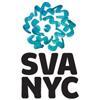
The School of Visual Arts (SVA) has a 3D Animation and Visual Effects BFA Program, which features classes taught by award-winning instructors in computer labs, production studios, and dedicated suites. The computer labs house the same hardware and software used by professionals in the Animation and Visual Effects (VFX) industry. Students can access the lab 24/7 remotely, off-campus.
The BFA Program emphasizes learning by doing. Students in the Program have the opportunity to develop Animation and VFX skills by working with alumni-owned studios such as Titmouse, Augenblick, and Plymptoons.
Consisting of four years of study, the SVA 3D Animation and Visual Effects BFA Program requires 120 credit hours including 72 credits in studio art courses; 30 credits in humanities & sciences courses; 15 credits in art history courses; and three elective credits from any area. Course examples include VFX and Compositing I and II, VFX and Motion Graphics III and IV, VFX Animation with Houdini, Advanced Python for Technical Directors, Color Grading, Character FX I, Production Skills I and II, Advanced Compositing Techniques, and Virtual Reality Design.
The 3D Animation and Visual Effects BFA Program at School of Visual Arts culminates with a Thesis Film to be screened by industry professionals.
Graduates have gone on to win awards from the Academy of Motion Pictures and at major festivals. SVA BFA alumni can be found at major studios such as Lucasfilm Animation, Sony Pictures Animation, Disney Animation Studios, Warner Bros. Animation, Nickelodeon, and DreamWorks. Some SVA graduates go on to work for independent animation studios worldwide or to launch their own studios or freelance businesses.
School of Visual Arts opened in 1947 as the Cartoonists and Illustrators school. Classes began with just three teachers and 35 students. Today, School of Visual Arts serves approximately 4,110 students enrolled in dozens of BFA, MA, MFA, and MPS programs. SVA is accredited by the Middle States Commission on Higher Education (MSCHE), with individual program accreditation by the National Association of Schools of Art and Design (NASAD) and the Council for Interior Design Accreditation (CIDA).

The School of Animation & Visual Effects at Academy of Art University (Academy of Art) is a STEM Certified School that is the only Animation & VFX school that teaches in a studio production environment known as Studio X. This collaborative, in-house, student-run production studio has real-world clients, allowing students to obtain credits before they graduate. Studio X students have been credited on films such as Beasts of the Southern Wild, Fruitvale Station, and many others.
Academy of Art University has four programs for students seeking a career in VFX. Options include the AA, BFA, MA, and MFA in Animation & Visual Effects (VFX). Academy of Art also has an Animation and VFX Certificate Program that allows students to skip the Liberal Arts coursework and dive right into Animation and VFX.
Course examples across programs include Producing for Animation & Visual Effects 1, Cinematics for Animation & VFX, Physics for Artists: Light, Sound, and Motion, History & Technology of VFX and Computer Animation, Storyboarding, Principles, Visual Effects for Animation, 3D Character Animation 3, Lip Sync & Facial Performances, Fundamentals of Lookdev & Lighting, 3D Animation Physics and Mechanics, 3D Modeling & Animation 1 (Maya), and Careers in Animation & VFX.
Across programs, students have opportunities to complete an internship, study abroad experiences, and a professional demo reel and/or portfolio. Graduates of the School of Animation & Visual Effects at Academy of Art University are prepared for careers in the Entertainment industry.
Program alumni have been hired at major companies and studios such as Industrial Light & Magic (ILM), Google, Sony Pictures Imageworks, Weta FX, Walt Disney Animation Studios, Sony Pictures Animation, Riot Games, LAIKA, Marvel, and CASA VFX.
Academy of Art University is a family-owned private university located in San Francisco—one of the world’s top cities for animation careers. Established in 1929 and serving more than 7,000 students, Academy of Art is of the nation’s largest private art and design schools. Divided into 22 schools, Academy of Art University offers more than 129 degree programs in 40+ areas of study. Programs lead to the AA, BA, BFA, BS, B. Arch, MAT, MA, MFA and M. Arch degrees.
The Academy is accredited by the WASC Senior College and University Commission (WSCUC).

The Digital Animation & Visual Effects School (DAVE School) has a Visual Effects Production (VFX) Program with two option including a 12 month Diploma consisting of 60 credits and the 32 month Bachelor’s degree consisting of 120 credits. Students in both programs will master industry software such as Maya, Unreal Engine, and After Effects, while working their way through the production process from start to finish.
Both program options are taught in a flexible, hybrid format that combines live, online classes with studio residencies held at the Orlando, Florida campus. Courses for the program are project-based, and include titles such as Dynamics and Visual Effects for Motion Graphics, VFX & Compositing, Emerging VFX Tech & Pipelines, Digital Compositing, Character, Prop and Environment Modeling, Rotoscoping, 3D Animation for Motion Graphics, and Level Design. DAVE School students will also learn the basics of creating a start-up.
Students in all DAVE School programs will build a demo reel and create a portfolio. Graduates work at major studios around the world. Some DAVE School alumni go on to launch their own studios or freelance businesses.
The Digital Animation & Visual Effects (DAVE) School was founded in 2000. Located on the backlot of Universal Studios, Florida, The DAVE School is an academic unit of NUC University, which is accredited by the Middle States Commission on Higher Education (MCSHE). DAVE serves around 1,000 students enrolled in six programs leading to a Bachelor’s degree or Diploma.

The Entertainment Design Program at ArtCenter College of Design (ArtCenter) allows students to customize their coursework in an area of their choosing. This includes Visual Effects (VFX), Feature Animation, Video Games, and more. Leading to a BS, the Program, also has a number of established Tracks that are suitable for students who would like to launch a career in VFX. Examples include Concept Design, Animation, and Game Design.
Students in all Tracks and self-designed Specializations have access to VFX courses such as Character Design, Concept Design 1 & 2, Worldbuilding, Entertainment Design 1 &2, How Things Work, Light and Color, Visual Structure, Rendering and Lighting, Production Design, Film, and Light and Color. Students will also complete Portfolio/Senior Project 1 & 2, and the 8th Term Portfolio Review.
ArtCenter College of Design graduates are prepared to pursue positions in all areas of Film and Entertainment. ArtCenter alumni have been hired at top companies and studios such as Apple, DreamWorks, Blizzard Entertainment, Microsoft, Marvel, Paramount, Walt Disney Imagineering, Google, Riot Games, Amazon, The WB, Netflix, and Mattel.
ArtCenter College of Design serves approximately 2,320 students from more than 50 countries. Founded in 1930, ArtCenter has campuses in Pasadena and Los Angeles, California, and satellite studios in Petersen Automotive Museum (Miracle Mile, Los Angeles) and Berlin, Germany. ArtCenter offers 11 undergraduate programs, seven graduate degree programs leading to an MFA or MS, a joint MS/MBA program, and undergraduate minors for Business, Creative Writing, and Social Innovation students.
ArtCenter College of Design is fully accredited by the WASC Senior College and University Commission (WSCUC) and the National Association of Schools of Art and Design (NASAD).

University of Texas at Austin (UT Austin) houses the Moody College of Communication, home of the Department of Radio-Television-Film (RTF), which has several path to study Visual Effects (VFX). For each, students have access to a variety of courses that focus on Visual and Special Effects. Examples include VFX & Motion Graphics, VFX for Storytelling, Digital Media Production, and CGI for Film and Games.
In the Digital Media Production course, students can choose an area of interest such as Compositing and VFX, CGI and Interactive Game Design, and Animation and Simulation. In the CGI for Film and Games course, students study Simulating Effects, Lighting, and Virtual Cinematography.
All UT Austin RTF students have access to the Digital Media Production Lab (DML), which features Adobe Creative Cloud Suite 2022, Autodesk Maya and Mudbox, Blackmagic Davinci Resolve, and other VFX tools. The DML also provides dedicated work spaces; five surround sound dub stages; and a 70 x 20 green screen.
RTF students have the opportunity to participate in programs and events hosted by the Center for Entertainment and Media Industries (CEMI), as well as access to Wofford Denius UTLA Center for Entertainment & Media Studies, which provides internship opportunities at a number of LA studios.
Specific program options for students interested in VFX include the RTF BA, RTF Minor, and the Film & Media Production MFA. VFX courses are also accessible to students in the Arts and Entertainment Technologies BS Program (AET BS) and the UT Austin Game Development and Design Program.
The AET BS is housed in the School of Design and Creative Technologies. The Game Development and Design Program is a partnership between the AET Department, the Computer Science (CS) Department, and the RTF Department. This program leads to a BS.
Recent graduates of the Film and Entertainment Programs at UT Austin have been hired at some of the world’s top studios and production companies. Examples include Walt Disney Studios, Sony Pictures Classics, Searchlight Pictures, Amazon Studios, Shondaland, Paramount Pictures, DreamWorks Animation, Lionsgate, and BioWare.
Founded in 1883, University of Texas at Austin serves approximately 52,385 students, making it one of the largest universities in Texas. UT Austin provides more than 155 undergraduate degree programs with 170+ fields of study, 139 graduate degree programs, and nearly 100 doctoral programs across 18 colleges and schools. University of Texas at Austin is accredited by the Southern Association of Colleges and Schools Commission on Colleges (SACSCOC).

The School of Film and Animation at Rochester Institute of Technology (RIT) is a Designated Center of Excellence (COE) by Toon Boom Animation. Housed in the College of Art and Design, the School has a program that explores Animating for Digital and Visual Effects; Games; Augmented and Virtual Reality (AR/VR), and Films. Leading to a Film and Animation BFA, this multidisciplinary Program consists of courses such as Digital Effects & Compositing, Particles & Dynamics, After Effects for Animators, World Building Workshop, Virtual Production I-II (explores real-time visual effects), Film Sound Theory: Effects, Production, Computers and Imaging Technology, Production Process, and Building the 3D Characters.
Other Program features include a variety of internship opportunities at local and regional studios and companies; cooperative education (co-op) in the College of Art and Design, which provides hands-on experience in a professional environment; and Study Away: LA, which allows students to spend a semester in Los Angeles, where they can intern at top studios and entertainment companies, and take two courses to complement the experience.
Film and Animation students at Rochester Institute of Technology also have access to the 52,000 square foot MAGIC Spell Studios, along with labs and classrooms outfitted with industry standard technology and software. At all levels, students may participate in the RIT’s Creative Industry Day, where they have the opportunity to interact with representatives of studios, design firms, and other creative companies.
Graduates of the Film and Animation Program at Rochester Institute of Technology are prepared to pursue positions such as VFX Artist, Effects Animator, Director, Visual Effects Supervisor, 3D Modeling and Character Designer, and Production Manager. RIT alumni have been hired at major studios such as Disney, Industrial Light & Magic (ILM), Sony, DreamWorks, Lucasfilm, Electronic Arts (EA), Dolby, and Nickelodeon.
Rochester Institute of Technology is a top research university that dates back to 1829. With global campuses in China, Croatia, Dubai, and Kosovo and serving more than 19,000 students from 50 states and over 100 nations, RIT is also one of the largest private universities in the U.S. Students at RIT have access to more than 200 academic programs across 11 colleges and institutes. Rochester Institute of Technology is accredited by the Middle States Commission on Higher Education (MSCHE).

Texas A&M University (TAMU) is home to the new School of Performance, Visualization and Fine Arts. Within the School is a Visualization Program with BS, MS, and MFA options. The MFA is one of a few programs of its kind in the U.S. and possibly the only one in the State of Texas.
Established in 1989 the TAMU Visualization Program is cross-disciplinary, allowing students to explore Computer Graphics, Visualization, Art, Interaction, and Design. Through electives, students at all levels may focus in any area of Specialization. This includes Visual Effects (VFX). Examples of VFX-related courses include Visualization Techniques, Digital Rendering, Visual Studies Studios, Computing for Visualization, Digital Compositing, Principles of Design, Virtual Reality, Creating Digital Environments, Multimedia Design and Development, Digital Characters: Art, Technology, Uses and Meaning, Interaction Design, and Interactive Virtual Environments.
All TAMU Visualization students have opportunities to participate in the Annual Career Fair; the Semester Away Program in Italy, Germany, and other countries; and the Internship Program, which spans 15 weeks and 600 hours. Undergraduate internships are worth six credit hours. Graduate internships are worth eight credits. TAMU Visualization students have interned at a variety of Game, Graphic Design, and Animation studios.
Graduates of the TAMU Visualization Programs are prepared to pursue careers in the Entertainment Industry (Visual Effects, Game Design and Development, and Animation), Web Design, Interactive Design, and User Interface Design. Texas A&M University Visualization graduates have been hired at major studios such as Pixar, DreamWorks Animation, Walt Disney Animation Studios, Industrial Light & Magic (ILM), and Reel FX.
Texas A&M University, College Station opened its doors in 1876 as the state’s first public Institution of higher learning. Today, the school is the primary location for Texas A&M, with branch campuses in Galveston, Texas and Doha, Qatar. The school serves approximately 74,830 students enrolled in 140+ undergraduate programs and 270+ graduate degree programs across 17 colleges and schools. Texas A&M University, College Station is accredited by the Southern Association of Colleges and Schools Commission on Colleges (SACSCOC).

The School of Theater, Flim and Television at University of California Los Angeles (UCLA) houses the Department of Film, Television and Digital Media (FTVDM), which has an undergraduate Film Program that features Visual Effects (VFX) and Special Effects coursework. Leading to a BA, the Program covers three distinct areas: Production (film, television, digital, experimental, and animation); Film and Television craft (writing, directing, photography, sound recording, and editing); and Cinema and Media Studies (history, theory, and aesthetics). Students interested in VFX may Concentrate in Editing and Postproduction during their senior year.
Courses options include Digital Cinematography (explores special effects), Art and Technique of Filmmaking, Motion Picture Lighting, Film Editing, Computer Animation for Film and Video, Art and Practice of Motion Picture Producing, Advanced Film Editing, Digital Audio Postproduction, Experimental Film, and Film and Television Laboratory.
The School of Theater, Film & Television at UCLA has more than a dozen initiatives that students may participate in including Special Effects for Film and Television, Interactive Television, Computer Animation and Video Gaming, Computer Assisted Theater Design, and the Development of Web-Based Media Arts. FTVDM students also have access to the state-of-the-art Walter Lantz Digital Animation Studio and other production facilities.
Graduates of the FTVDM Department at UCLA are prepared for careers in all areas of Film, Television, and Entertainment. UCLA alumni have been hired at major studios such as Walt Disney Imagineering, Nickelodeon, Pixar, and DreamWorks.
University of California Los Angeles has played a pivotal role in the formation of nearly 200 startup companies to date. Established in 1919, the school serves 45,900 students enrolled in more than 250 programs across 12 professional schools and UCLA College. UCLA students hail from more than 118 countries around the world. University of California Los Angeles is accredited by WASC Senior College and University Commission (WSCUC).

Carnegie Mellon University (CMU) is home to the Integrative Design, Arts and Technology Network (IDeATe). In collaboration with the Robotics Institute in the School of Computer Science, IDeATe manages eight undergraduate areas that can be taken as minors. This includes Animation & Special Effects.
Led by faculty with expertise in Art and Robotics, course examples for the Animation & Special Effects Minor include Special Topics in Animation: Storytelling Through Effects; Character Rigging for Production; Experimental Capture; Digital Realities: Introducing Immersive Technologies for Arts and Culture; Animation, Art and Technology; Physical Computing; IDeATe Portal: Creative Kinetic Systems; and Little Games/Big Stories: Indie Roleplaying Game Studio.
The Animation & Special Effects Minor is open to students in any program. Examples include Film and Visual Media; Art; Video and Media Design; and Electronic and Time Based Media.
Graduates of the IDeATe Programs at Carnegie Mellon University have been hired at major studios and networks such as Electronic Arts (EA), Comedy Central, DreamWorks Animation, Warner Bros. Games, Activision Blizzard, Paramount, Sony Interactive Entertainment, Walt Disney Studios, Zynga Games, and MTV.
Founded in 1900 by industrialist and philanthropist Andrew Carnegie, Carnegie Mellon University began as Carnegie Technical Schools. Today, the school serves around 15,800 students enrolled in more than 200 programs across seven colleges and schools. CMU also has more than a dozen degree-granting locations, and over 20 research partnerships in Silicon Valley, Australia, Africa, and Qatar. A private, global research university, Carnegie Mellon University is accredited by the Middle States Commission on Higher Education (MSCHE).

Otis College of Art and Design (OTIS) has nine BFA Programs that allow students to expand and customize the curriculum through one of 17 Minor options. BFA students may also add a Certificate to enhance any undergraduate program. An ideal choice is the Motion Graphics Certificate, which focuses on Visual Effects (VFX), Film Editing, Animation, and Digital Skills. Students will master software such as Adobe Premiere, After Effects, and Cinema 4D, and develop skills in Music and Sound Editing, Digital Storytelling, and Background and Character Development.
The OTIS Motion Graphics Certificate Program culminates with a professional-quality portfolio of the students best VFX or other works. Students can complete the Program in 18-24 months.
In addition to the Certificate Program, OTIS has a Digital Media Minor that explores both traditional and digital skills related to VFX, Animation, Motion Graphics, Film, Video Games, and more. Course examples include Motion Design, Game Design, 3D for Storytellers, Animation, and Storytelling for Digital Artists.
Specific OTIS BFA Programs for students interested in VFX include Game & Entertainment Design and an Animation. Across Programs, students will take VFX-related courses such as Motion Graphics I-II and 2D and 3D Computer Animation. Students will also master industry-standard software such as Maya, Houdini, Unreal Engine, Nuke, Cinema 4D, and After Effects.
Across programs, students will begin their studies with the immersive OTIS Foundation Program. During this one-year requirements, students will take studio courses across both the Visual Arts and Design disciplines. Course examples include Connections Through Color and Design, Form and Space, Creative Practices, Drawing and Building Form, and Creative Practices I-II.
Graduates of the BFA, Certificate, and Minor Programs at Otis College of Art and Design are prepared for careers such as VFX Artist, Effects Animator, Unreal Engine Artist, Real-Time Development Artist, Unreal Engine Animator, Character Animator, 2D/3D CG Artist, Cinematic Animator, Rotoscope Artist, Match Mover, Modeler, Background Artist, Animatic Designer or Producer, Storyboard Artist, and Animator.
Program alumni have been hired for VFX positions at Industrial Light & Magic (ILM), Sony Pictures Imageworks, Mattel, New Deal Studios, and Hydraulx. Other OTIS BFA graduates have been recruited by Apple, Disney, Pixar Animation Studios, DreamWorks Animation, Nickelodeon, Digital Domain, Weta FX, Mattel, Blizzard Entertainment, LucasArts, Nike, Electronic Arts (EA), Cartoon Network, and Netflix.
Established in 1918, Otis College of Art and Design is Los Angeles’ oldest professional school of the arts. This private, non-profit college serves more than 1,200 students enrolled in 11 BFA and MFA degree programs in the Fine Arts, Graphic Design, Public Practice, and Writing. A variety of minors and certificate programs are also available. Programs and courses at OTIS are led by more than 430 professors—all active professionals in their respective fields.
Otis College of Art and Design is accredited by the WASC Senior College and University Commission (WSCUC) and the National Association of Schools of Art and Design (NASAD).OTIS is also a member of the Association of Independent Colleges of Art and Design (AICAD) and the Partnership for Academic Leadership on Sustainability (PALS).
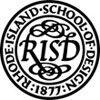
The Film/Animation/Video (FAV) Program at Rhode Island School of Design (RISD) has two paths to study Visual Effects (VFX). Leading to a BFA, the Program allows students to focus in Live Action Open Media or Animation. In both options, students will work in a studio environment to create films, visual effects, animations, and more using techniques such as stop-motion, computer-generated imagery (CGI), and hand-drawn.
Course examples across areas include Digital Effects and Compositing for the Screen, Advanced Stop Motion, Computer Generated Imagery 3D, Advanced Sound Design and Production, Computer Animation: Integrated Techniques, Experimental Film Techniques, Lighting For The Moving Image, Film Practices, and Senior Studio: Live Action.
Other program features include collaborative study; 24/7 access to animation and live action studios; workshops; Apple workstations equipped with Avid, Final Cut, Pro Tools, Autodesk Maya, the Adobe Production Suite; and access to studios for green screen and blackout shooting. In addition, all RISD students have the opportunity to complete a professional internship in a studio environment.
The FAV BFA Program at Rhode Island School of Design culminates with a Senior Project to be presented Annual RISD FAV Senior Show. This event takes place across four evenings—live on campus, and via online stream.
Rhode Island School of Design graduates have gone on to create, direct and/or produce a number of films and series. RISD alumni have also been recruited by major networks and studios such as DreamWorks, HBO, Pixar, Fox, and PBS. Some alumni have also launched their own studios, production companies, or freelance businesses.
Founded in 1877, Rhode Island School of Design is one of the first art and design schools in the U.S. This private, nonprofit college serves approximately 2,620 students enrolled in dozens of majors and programs. RISD is accredited by the New England Commission of Higher Education (NECHE) and the National Council for State Authorization Reciprocity Agreements (NC-SARA). The Architecture, Landscape Architecture, and MA in Teaching programs have special accreditation by the National Architecture Accrediting Board, Landscape Architectural Accreditation Board, and the RI Department of Education, respectively.

The College of Arts and Humanities at University of Central Florida (UCF) houses the School of Visual Arts & Design (SVAD). Within the School is a specialized graduate program for students seeking employment at studios and artists looking to make their own independent films. This three-year, 60 credit hour Program leads to an Emerging Media MFA with an Animation & Visual Effects Track.
Program features include labs and studios equipped with the same industry-standard software used in professional studios around the world; courses and projects led by professors with experience and connections in the industry; and the opportunity to co-direct a team of Emerging Media: Character Animation (BFA) students.
Course examples for the SVAD UCF Emerging Media MFA Program include Visual Effects for Animation and Live Action, Directing for Animation and Visual Effects, Script and Story Development for Animation and Visual Effects, Animation and Visual Effects Production I-IV, Visual Development for Animation and Visual Effects, Editing for Animation and Visual Effects, Technical Problem Solving for Animation and Visual Effects, Media and Music for Animation and Visual Effects, The History of Animation and Visual Effects, and Guerilla Marketing and Models of Distribution.
The Emerging Media MFA Program culminates with the 12 credit hour Visual Effects or Animation Thesis. This final film project allows students to display their visual storytelling skills while using VFX and Animation techniques such as stop-motion, 3D computer animation, and more.
Graduates of the Emerging Media MFA Program at University of Central Florida have been hired by a variety of organizations and studios such as Nickelodeon Animation, Blur Studio, Epic Games, Electronic Arts (EA), Pixar, Riot Games, Blizzard Entertainment, Walt Disney Animation Studios, NASA, Weta FX, Framestore, Lightbox, Titmouse, Lockheed Martin, Netflix, DiSTI, Reel FX, and the U.S. Navy.
University of Central Florida opened in 1968 as Florida Technological University. On the first day of classes, the school had less than 2,000 students. Today, UCF serves around 70,400 students, making it the largest university by enrollment in the state of Florida, and one of the nation’s largest universities. The school provides 240 bachelor’s degrees, 214 master’s degrees, and 81 doctorate degrees across 13 colleges. University of Central Florida is accredited by the Southern Association of Colleges and Schools Commission on Colleges (SACSCOC).

Jarvis College of Computing and Digital Media (CDM) at DePaul University (DePaul) is home to the School of Cinematic Arts, which has several paths to study Visual Effects (VFX). Options include BFA and MS degrees in Film & Television, a VFX Minor, and an Animation BFA. Both the BFA and MS degrees in Film & Television provide the opportunity to Concentrate in VFX. The Animation BA has a VFX Animation Concentration.
Across programs, students will take courses such as Introduction to Visual Effects, Visual Effects Cinematography, Advanced Topics in Visual Effects, Visual Effects Supervision, 3D Motion Graphics, Compositing I-II, 3D Texturing and Lighting, Producing for Animation and VFX, Advanced Color Correction, 3D Design & Modeling, Coding for Audio and Video, CG Compositing, Editing I-II, Virtual Cinematography, Previsualization, Virtual Cinema, and Post-Production.
Students in all Programs have access to the latest software, tools, and technologies including Cintiq labs; 3D motion capture, motion control, and sophisticated sound studios; 3D printing, stop motion stages and fabrication studios; and professional-level animation and effects software. Students also have access to the Animation Lodge, where they have opportunities to collaborate on group projects, network, and build their portfolios.
Other Program features include Project Bluelight, which provides hands-on experience in motion picture production to all interested students; the visiting artist series, where past guests have included artists from Pixar and Disney; and participation in the 10-week immersive Los Angeles Quarter Program where students have opportunities to intern at major Hollywood studios such Disney, Warner Brothers, DreamWorks Animation, Sony, Nickelodeon, The Jim Henson Company, Bix Pix Entertainment, and Titmouse.
Graduates of Jarvis College of Computing and Digital Media at DePaul University have been hired at DreamWorks Animation, LAIKA Studios, Warner Bros. Animation, Blizzard Entertainment, BioWare, Nickelodeon Animation, ShadowMachine, Walt Disney Animation Studios, Electronic Arts (EA), Cartoon Network, Iron Galaxy Studios, and The Mill, among others.
DePaul University provides exceptional academics and real-world experiences to prepare students for a changing world. With nearly 21,000 students across more than 300 academic programs, DePaul has two campus locations in Chicago. Students richly benefit from the city’s many opportunities. In turn, DePaul is one of the forces that shapes Chicago’s future. The university was founded in 1898 by the Congregation of the Mission (Vincentians), a Roman Catholic religious community dedicated to following the ideals of St. Vincent de Paul. DePaul is among the nation’s top universities for diversity because of its long tradition of providing a high-quality education to students from a broad range of backgrounds. DePaul is one of the largest private, nonprofit universities in the Midwest and one of the largest Catholic universities in the nation.

University of Utah (The U) has several paths to study Visual Effects (VFX) in the College of Fine Arts and Kahlert School of Computing. The College of Fine Arts houses the Department of Film & Media Arts (F&MAD), which allows students to tailor their BA degree across multiple areas of interest. This includes Special and Visual Effects (VFX). The School of Computing and the Department of Film & Media Arts launched the Entertainment Arts & Engineering (EAE) Program more than a decade ago. This Program has a Computer Science BS with an EAE Emphasis and a Master of EAE (MEAE). Both allow students to study VFX.
In addtion to the opportunity to customize the curriculum, students in the F&MAD BA Program may choose from four Emphasis Areas. Each area has a wide selection of VFX-related coursework. Emphasis options include Entertainment Arts and Engineering, Media Arts Production (MAP), Animation, and Film Production.
Course examples across Emphasis Areas include Digital Effects and Compositing for the Screen, 3D Computer Animation, Digital Visual Effects, Film Production, Interactive Machinima, Motion Capture, 3D Character Production, Digital Cinematography, 3D Character Animation, Programing, Media Arts Production, Directing, Programming, Film Editing, Sound for Film and Digital Media, Film Production, Digital Imaging for Visual Artists, Directing, and Storyboarding/Visual Storytelling.
The EAE BS at University of Utah includes extensive coursework in Computer-Generated Special Effects, 3D Animation, Game Development, Visual Perception, and Graphics. The MEAE has a Technical Arts Track, which allows students to Specialize in VFX. Across courses such as Technical Art I-IV, Advanced 3D Character Production, 3D Modeling, and Serious Games, students will use programmable GPU shaders to customize the graphics pipeline producing various visual effects; master shading language fundamentals and GPU primitive operations; and work in teams to pitch, prototype, and present VFX-rich games.
Across programs, students will create a variety of games, animations, films, and other projects that demonstrate their VFX skills. Upon completion of the programs, students will have a demo reel and/or portfolio of their best work.
Graduates of the Film Programs at University of Utah are prepared for careers such as VFX Artist, Visual Effects Animator, Film Editor, VFX Editor, Production Manager (VFX), Computer Animator, Digital Filmmaker, and Production Coordinator (VFX).
Graduates of the EAE Programs at University of Utah are prepared for careers such as VFX Artist, Animation VFX Artist, VFX Editor, Production Coordinator (VFX), Video Game FX Artist, and 3D Animator.
Founded in 1850, University of Utah is the state’s public flagship institution. A top-tier research university, The U serves more than 34,900 students enrolled in over 200 programs across 18 colleges and schools and nearly 100 departments. University of Utah is accredited by the Northwest Commission on Colleges and Universities (NWCCU).

The College of Motion Picture Arts at Florida State University (FSU) has several programs that can prepare students for careers in visual effects (VFX). Options include a limited-access Motion Picture Arts BFA Program with Concentrations in Production and Animation and Digital Arts, and an MFA in Production. Students in all programs can pursue a variety of specialization areas through more than 30 electives. Examples of Specialization areas include Visual Effects, Screenwriting, Documentary Filmmaking, and Film Business.
Available VFX-related course examples across programs include Visual Effects Cinematography, History and Practice of Visual Effects and Animation, Visual Effects Aesthetics, Compositing I-II, Motion Picture Sound, 3D Computer Animation, Lighting, Texturing, and Rendering, Digital Studio Department Leadership, Motion Picture Editing, 3D Computer Graphics, Production Design Workshop, Filmmaking, Stop-Motion Animation, and Advanced Workshop in Area of Specialization.
Additional program features include small class sizes of no more than 15 students; the opportunity to complete several major films, including the thesis film; and the option to complete a professional internship in a studio environment. All FSU College of Motion Picture students may participate in the Torchlight Program, which provides instruction in the marketing, finance, and distribution of films.
Graduates of the Motion Picture Arts Program at Florida State University are prepared to pursue positions in the Entertainment Industry. Potential job titles include Visual Effects Artist, Effects Animator, CG Lighter, Rigger, Animator, Animation Supervisor, Modeler, Animatics Supervisor, and Storyboard Artist.
Founded in 1851, Florida State University serves approximately 45,495 students enrolled in more than 275 degree programs at all levels. One of the largest and the oldest continuous site of higher education in Florida, FSU houses 16 colleges and schools at campuses across the state. Florida State University is accredited by the Southern Association of Colleges and Schools, Commission on Colleges (SACSCOC).

Antoinette Westphal College of Arts & Design (Westphal or Westphal College of Art & Design) provides studio-based programs leading to undergraduate and graduate degrees. All Westphal students participate in the Drexel Cooperative Education (Co-op) Program, where they have the opportunity to gain professional experience at a variety of companies, organizations, and studios. Examples include Cartoon Network, Sony Studios, FuseFX, Mediakraft TV, and 3FX Medical Animations.
Drexel University has been a cooperative educational institution since 1919. Serving more than 2,000 students, Drexel’s Westphal College of Arts & Design is accredited by the National Association of Schools of Art and Design (NASAD).
Within the Westphal College is an Animation & Visual Effects (VFX) BS Program that consists of 187 units of study. An accelerated Animation & VFX BS/Digital Media MS is available as well as an Animation & VFX Minor. The accelerated program can be completed in just five years.
Consisting of eight courses, the Minor is open to both undergraduate and graduate students in any discipline. Course examples include Digital Imaging for Animation & VFX, Scripting for Animation and Visual Effects, and Realtime Visualization.
The Animation & VFX BS Program is housed in Westphal’s URBN Center. Designed for collaboration across programs, the Center consist of shared making spaces and state-of-the-art studios and labs. This includes the Animation Capture & Effects Lab (ACE-Lab), which consists of a 1200-sq-ft digital media studio equipped with the latest digital media technology.
Course examples for the Drexel Animation & VFX Program include Digital Imaging for Programming, Animation & VFX, Digital Compositing, Spatial Data Capture, Scripting for Animation & Visual Effects, Character Animation, Light & Sound, Experimental Animation Lab, Audio Production & Post, Digital Character Creation, and Organic Modeling.
Other Program features include courses taught by professionals in the Entertainment, Technology, and Media industries; the Drexel University Study Abroad Program; and optional participation in Westphal’s Drexel in LA Program. This experiential learning option allows student to spend an entire summer term living and working in Los Angeles, with students in the Film & Television and Screenwriting & Playwriting Programs. Drexel in LA students have held internships at companies such as Riot Games, BBC Worldwide Productions, and ImageMovers.
The Animation & Visual Effects Program at Drexel University culminates with a Capstone Project, which will be presented in a Thesis Exhibition attended by professionals in the industry. Graduates are prepared for careers such as VFX Artist, Visual Effects Supervisor, Technical Director, 3D Modeler, Character Animator, Art Director, and Texture Artist.
Drexel University was established in 1891 as Drexel Institute of Art, Science, & Industry. The school serves approximately 23,215 students enrolled in more than 200 degree programs across 15 colleges and schools. Drexel University is accredited by the Middle States Commission on Higher Education (MSCHE). The Digital Media and Animation & Visual Effects (VFX) Programs at Drexel are accredited by the National Association of Schools of Arts & Design (NASAD).

Georgia Institute of Technology (Georgia Tech) has been offering Digital Video Special Effects Production and Computer Animation courses since 1999. Today, the school has several paths to study Visual Effects (VFX) and Special Effects.
Georgia Tech’s Ivan Allen College of Liberal Arts houses the School of Literature, Media, and Communication (LMC). Georgia Tech is also home to the College of Computing. Together, these colleges and schools house the Computational Media (CM) BS (BSCM) Program, MS and PhD degrees in Digital Media, and a 19 credit hour Computing & Media Minor.
The Computational Media Program at Georgia Tech’s launched in 2004 with just one student. Today, the Program serves more than 300 students, making it one of Georgia Tech’s fastest growing programs. Across programs, available course and topics include Digital Video Special Effects, Special Effects, Experimental Media, Interaction Design, Computer animation, Constructing the Moving Image, Computer Graphics, Objects and Design, Reality Experience Design, and Special Topics in Digital Media.
Degree-seeking students at Georgia Tech have the option to add a Film Studies Minor (offered in the School of LMC), which allows them to take production courses, such as VFX, as part of elective requirements. Examples include Video Production, Experimental Film, Advanced Video Production, Film and/as Technology, and Cinema and Digital Culture.
Georgia Tech School of LMC students have access to post-production labs outfitted with Adobe Creative Cloud Suite and DaVinci Resolve software. The School of LMC is also home to LMCFilms—a film and video equipment rental house that provides a range of industry-standard equipment for students and researchers working in the entertainment industry.
Graduates of the CM, Digital Media, and Computing & Media Programs at Georgia Institute of Technology work in Visual and Special Effects, Film Production, Animation, Interactive Design, 3D Modeling, and Game Simulation.
Georgia Institute of Technology was established in 1885. When it opened, the school had just 129 students enrolled in one degree program—the Mechanical Engineering BS. Today, Georgia Tech serves more than 40,000 students enrolled in more than 180 degree programs and minors across six distinct colleges and 28 schools. Georgia Institute of Technology is accredited by the Southern Association of Colleges and Schools Commission on Colleges (SACSCOC).
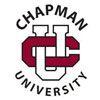
Chapman University (Chapman) houses the Lawrence and Kristina Dodge College of Film & Media Arts (Dodge College). Within the College is an Animation and Visual Effects (VFX) Program. Students in this Program may focus in VFX or Animation.
Dodge College also has a VFX Minor that can be added to undergraduate programs such as the Film & Television Production BFA, the Creative Producing BFA or the Film & Media Studies BA. The VFX Minor complements graduate programs such as the Film Production MFA and Film and Media Studies MA.
Consisting of 21 credits, the VFX Minor includes courses such as Introduction to Animation and Visual Effects, 3D Computer Graphics, Visual Effects: Fundamental Techniques and Technologies, Advanced Visual Effects Production and Workflow, History and Aesthetics of Animation and Visual Effects, On-Set and Post-Production Visual Effects Supervision, and Advanced Previsualization for Motion Pictures.
Students in the Animation and Visual Effects BFA Program at Chapman University will have opportunities to work with industry software and tools such as Xsens MVN Animate, Autodesk Maya, Adobe Creative Suite, and 3ds Max. BFA students also have access to the Digital Media Arts center (DMAC)—a digital arts studio and lounge inspired by studios such as Disney and Pixar.
Course examples for the Program include Fundamental Graphics I-II for Animation and Visual Effects, Storytelling in Animation and Visual Effects, Production Design for Animation and Visual Effects, Advanced Visual Effects Production and Workflow, On-Set and Post-Production Visual Effects Supervision, Storyboarding and Story Reels, Visual Effects: Fundamental Techniques and Technologies, History and Aesthetics of Animation and Visual Effects, Mechanics of Motion, Audio Techniques, and Advanced Previsualization for Motion Pictures.
All Animation and VFX students at Chapman University are eligible to apply for internships at major studios such as Disney, Blizzard Entertainment, and Blur Studio. Students may also participate in student clubs and organizations such as the Chapman Animation and Visual Effects Club, the Virtual Reality/AR Club, or The Collective. Chapman University also has an active study abroad program that provides opportunities to work in entertainment studios around the world.
Graduates of the Animation and Visual Effects BFA Program at Chapman University are prepared for careers such as Visual Effects Artist, Animator, VFX Supervisor, Technical Director, Compositor, Production Coordinator, 3D Artist, Modeler, Previs Artist, Texture Painter, Matchmove Artist, Computer Graphics (CG) Supervisor, Creature Technical Director, Pipeline Technical Director, Roto Artist, and Compositing Supervisor.
Founded in 1861 as Hesperian College, Chapman University is a business, entertainment, and technology college that serves approximately 10,000 students from just 49 states, two territories, and 82 countries. Chapman offers 200 programs across 11 different schools and colleges. Chapman University is accredited by the WASC Senior College & University Commission (WSCUC).
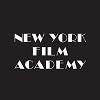
The 3D Animation & Visual Effects School at New York Film Academy (NYFA) has a hands-on 3D Animation & VFX BFA Program that features courses and projects led by faculty who have worked with major studios such as Universal, DreamWorks, Disney, and Netflix.
Course examples for this accelerated three-year program include Particle Dynamics and Visual Effects in Maya, Storyboard & Animatic Animation, Compositing with Nuke, and Screenwriting, Lighting & Cameras, MEL and Python Scripting, Advanced Rigging 1, Lighting and Rendering with V-Ray and Arnold, UV Mapping, Concepting with Zbrush, Character Design, Professional Development in Animation, and Maya Polygonal Modeling.
Students in all NYFA Programs have access to state-of-the-art production facilities and equipment, as well as an array of Animation and VFX software such as SideFX’s Houdini FX, Pixologic’s ZBrush digital sculptor, Chaos Group’s V-Ray, MotionBuilder, Foundry’s Nuke compositing and editing program, Autodesk’s 3D Maya, and Mudbox.
In addition to the BFA Program, New York Film Academy has a 3D Animation & VFX MFA Program that explores VFX for Film, TV, Games and Virtual Reality. Hands-on projects include Previs Demo Reels, Technical Direction, and Motion Capture. The Program culminates with a Thesis and a professional demo reel of the students best work.
A four-week Online 3D Animation & VFX Workshop is also available. Students in this program will develop the skills needed to pursue entry-level positions in the field. Through hands-on projects, students will master Maya, movement, character development, weight, timing, and more. The Workshop culminates with the creation of an original 3D computer animated film.
New York Film Academy alumni are VFX Artists, Filmmakers, and Animators. Program alumni have worked with (or are currently working at) places such as Digital Domain, Tyler Perry Studios, DreamWorks, NBCUniversal, Bad Robot Productions, ACM Siggraph, and Gearbox Software.
New York Film Academy has degree-granting campuses in Los Angeles, New York, and Miami. Additional campuses and programs are located at Harvard University (Cambridge, MA) and in China, France, Australia, and Russia. Founded in 1992, NYFA serves thousands of students enrolled in dozens of Visual and Performing Arts programs. New York Film Academy is accredited Western Association of Schools and Colleges (WASC) Senior College and University Commission (WSCUC).

Columbia College Chicago houses the School of Media Arts, home to the Department of Cinema and Television Arts. Within the Department is a Cinema Visual Effects (CVFX) Concentration that prepares students for direct entry into the field. The CVFX Concentration is one of the eight areas open to Film and Television BFA Majors.
The Program begins with two Foundations courses including Cinema Notebooks and Cinema Image. These courses are taught back-to-back to give students an idea of what it’s like to work on a real production set. Columbia College also produces hundreds of film each year, allowing students to work on set with Film students at all degree levels.
The Cinema Visual Effects Concentration consists of 12 courses including CVFX Foundations, Computer Animation: Visual Effects, Motion Graphics I-II, Cinema Color I-II, Editing I and Editing I Studio, Computer Animation: Keyframing, CVFX Cinematography I, and CVFX Compositing I-II.
Examples of Film and Television course requirements include Cinematic Storytelling, World Cinema I-II, and Cinema and Television Production. BFA students will also complete BFA Studio, BFA Research and Presentation, and the BFA Thesis across two course.
All Film and Television students will have the opportunity to participate in the multidisciplinary Semester in LA Program (SiLA). This program allows students to work, live, and study in Hollywood for an entire semester. SiLA consists of a 15-20 hour a week LA-based internship; intensive week-long workshops in January and the summer; attendance at tapings, tours, and exclusive events; courses held at Sunset Las Palmas Studios; and networking events.
The Film and Television BFA/CVFX Program culminates with the production and completion of a short, festival-quality film. CVFX students will contribute what they’ve learned during this culminating experience.
Graduates of Columbia College Chicago have been recruited by major networks and studios such as Disney, Nickelodeon, Pixar, Warner Bros., DreamWorks Studios, Weta FX, and Cartoon Network.

Purdue University (Purdue) houses Purdue Polytechnic Institute (Purdue Polytechnic). One of the school’s 10 academic colleges, Purdue Polytechnic is home to the Department of Computer Graphics Technology (CGT), which has several paths to study visual effects (VFX). Options include the BS, MS, accelerated 5-Year BS/MS, and PhD in CGT. Students in all programs have the opportunity to major or concentrate in Animation and Visual Effects.
The Computer Graphics Technology Program at Purdue University is accredited by the Engineering Technology Accreditation Commission of the Accreditation Board for Engineering and Technology, Inc. (ABET). Visual Effects at Purdue University is a STEM-based discipline, so all students must take courses such as Calculus, Trigonometry, and Physics. The CGT Programs also explore the business side of the film and entertainment business, so students will take Business Writing, Management, Marketing, and Entrepreneurship courses.
Across Programs, VFX students will also take courses such as Visual Effects Introduction, Visual Effects: Particles And Procedural Effects, Visual Effects – Pyrotechnics And Destruction Effects, Post-Production And Special Effects For Computer Animation, Sketching For Visualization And Communication, The History And Technique of Visual Effects in Film, Geometric Modeling For Visualization and Communication, Motion for Computer Animation, Computer Graphics Programming, and Modeling for Entertainment Graphics.
Other CGT Program features include opportunities to create visual effects and animations using industry-standard programs such as Autodesk Maya; access to the Visual Effects Lab, IDEA Lab, High Performance Computer Graphics Laboratory, Heavilon Lab, Games Innovation Laboratory, and the Digital Enterprise Center; and training on the LightCraft Previzion System—the same visual effects system used in Hollywood productions.
All CGT students at Purdue University will work on real-world projects with real clients. These projects are led by professors who are experts in their respective fields. CGT students also have networking opportunities through Purdue’s ACM SIGGRAPH chapter.
Graduates of the CGT Programs at Purdue University enjoy a near 90% job placement rate. Program alumni are routinely hired by major studios and companies such as Google, Walt Disney, and DreamWorks.
Established in 1869, Purdue University is Indiana’s Land Grant University. This public school opened with six instructors and 39 students on September 16, 1874. Today, Purdue employs more than 10,000 full-time faculty members and employees that serve approximately 50,885 students from all 50 states and 130 countries. The school provides more than 400 programs in 11 colleges and schools. Purdue University is accredited by the Higher Learning Commission (HLC).

The College of the Arts at University of Florida (UF) is home to the Digital Worlds Institute. Within the Institute is an interdisciplinary BA Program that prepares students for careers in Visual Effects (VFX), Game Design and Development, Animation, Interaction Design, and more. Consisting of 120 credit hours, the Digital Arts & Sciences (BADAS) BA includes 30 credits of electives, which allows students to focus in VFX or other areas that best suit their career goals.
Elective courses may be selected from Experience Design & Production, Animation, and Game Design offerings. Courses related to VFX include Motion Design, Interaction & Usability, Digital Visualization, Game Design and Production, Advanced 2D Digital Animation Techniques, 3D Character Animation, Digital Storytelling, 3D Modeling and Texturing, Game Systems Development, and 2D Digital Animation Techniques.
In addition to 30 elective credits, the BADAS Program provides opportunities to enhance the BA degree through an outside Minor or Concentration. Examples include Art + Technology, Theatre Production. Drawing, Innovation, and Mass Communication Studies.
Other BADAS Program features include project-based learning, high-tech classroom, and collaboration with interdisciplinary teams. All University of Florida students also have the opportunity to complete an internship and/or study abroad for a semester or summer. Graduates of the Digital Worlds Institute at University of Florida are VFX Artists, Technical Animators, Game Designers, UI/UX Designers, Software Developers, Motion Graphics Artists, Modelers, and Texture Artists.
University of Florida was founded in 1858 as Gainesville Academy. When it opened, the Academy has just a few students. Today, UF serves approximately 61,110 students enrolled in more than 300 undergraduate and graduate programs across 16 colleges and schools. The University of Florida is accredited by the Southern Association of Colleges and Schools Commission on Colleges (SACSCOC).
